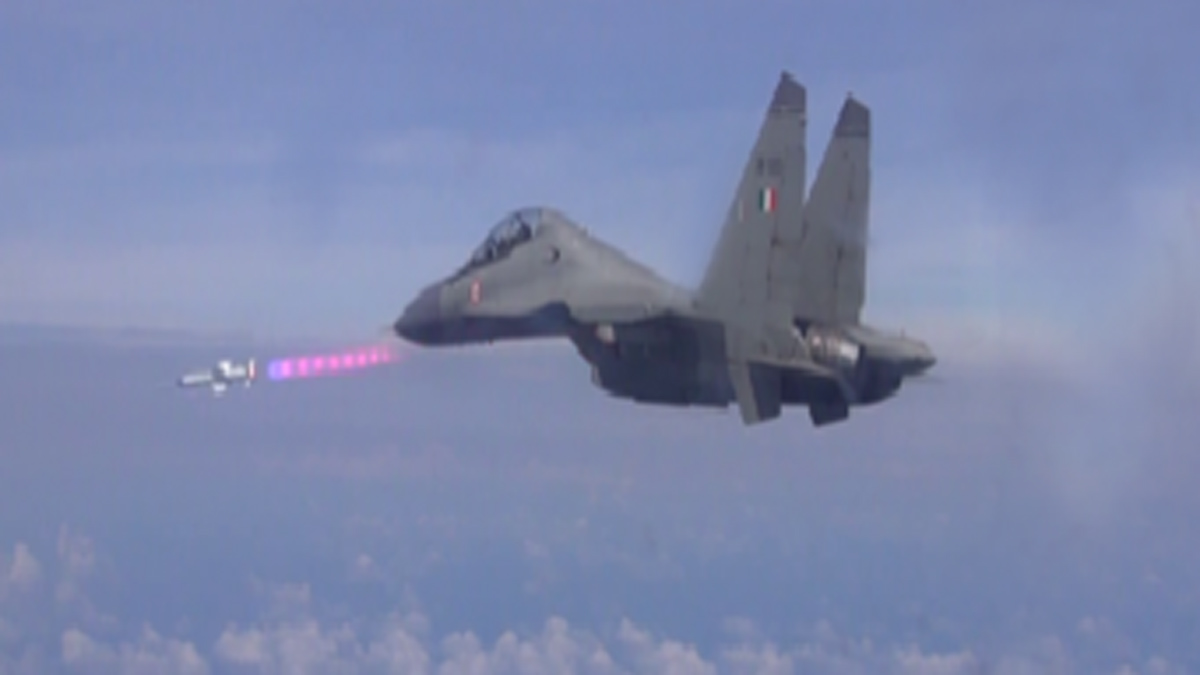How powerful is India's Astra beyond visual air-to-air missile?

In what comes as a major leap in India’s air combat capabilities, the Astra beyond visual air-to-air missile, designed by India’s Defence Research and Development Organisation (DRDO) for the Indian Air Force and Navy, was successfully test-fired recently.
Two launches were carried out against high-speed unmanned aerial targets at different ranges, target aspects and launch platform conditions.
The defence ministry said all subsystems of the missile performed as per expectations, including the radio frequency seeker, which has been indigenously designed and developed by the DRDO.
ALSO READ: Major boost to defence infrastructure: Strategic roads, helipads, ammo depots get NBWL clearance
The missiles destroyed the targets with pin point accuracy.
The successful trials from Su-30 Mk-I platform come as a significant strategic advantage in modern aerial combat as the missile has a range exceeding 100 km and is equipped with a highly advanced guidance and navigation system.
Why Astra matters?
The Astra weapon system integrated with SU-30 Mk-I aircraft is being inducted into the Indian Air Force (IAF). Designed to be mounted on fighter aircraft, the missile can engage and destroy highly manoeuvring supersonic aircraft.
The missile has all-weather day and night capability and uses a combination of mid-course inertial guidance with terminal active radar homing, ensuring extreme accuracy against manoeuvring targets.
The successful flight tests have re-established the accuracy and reliable performance of the Astra weapon system with indigenous seeker, the ministry said.
Defence